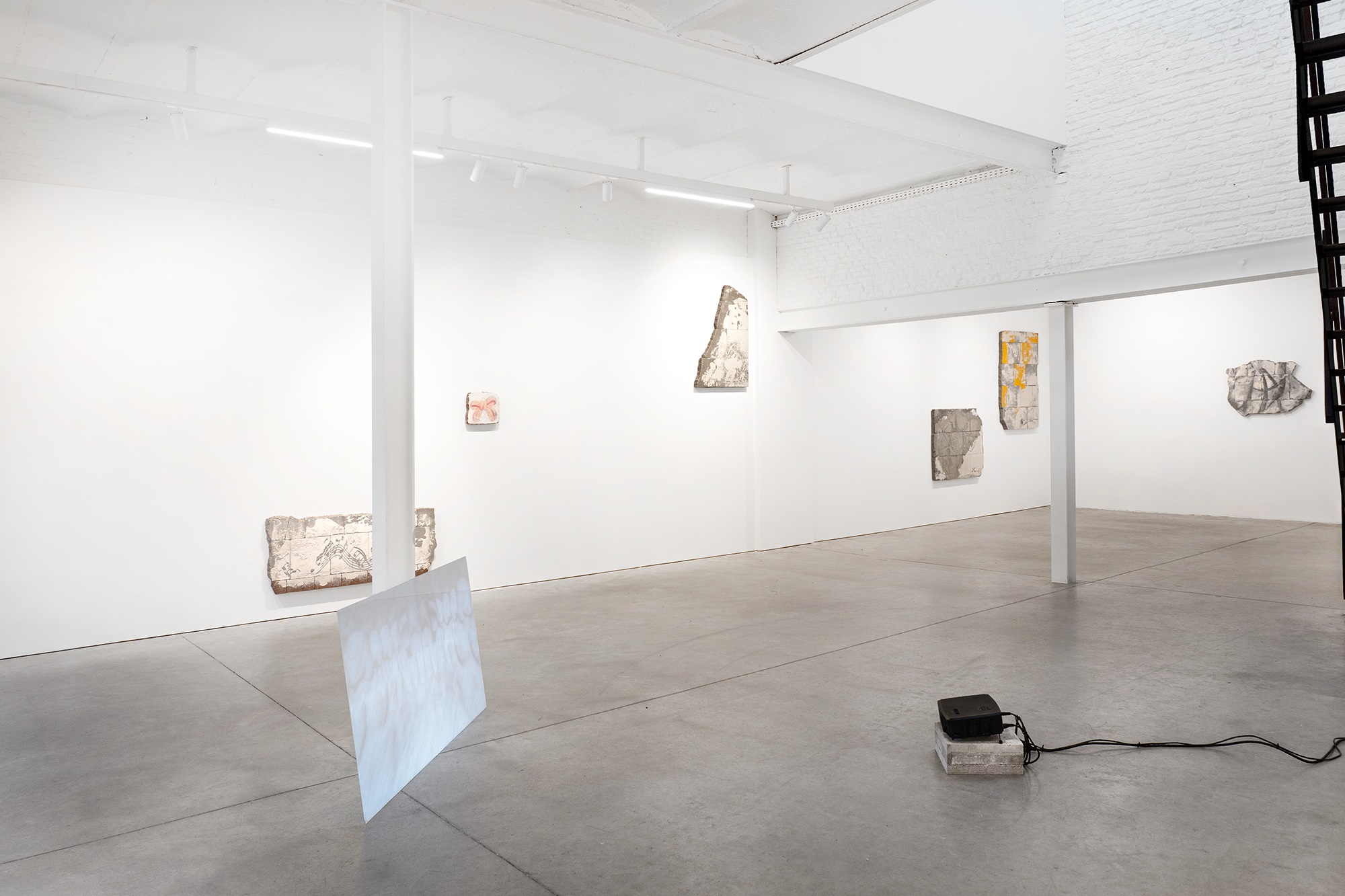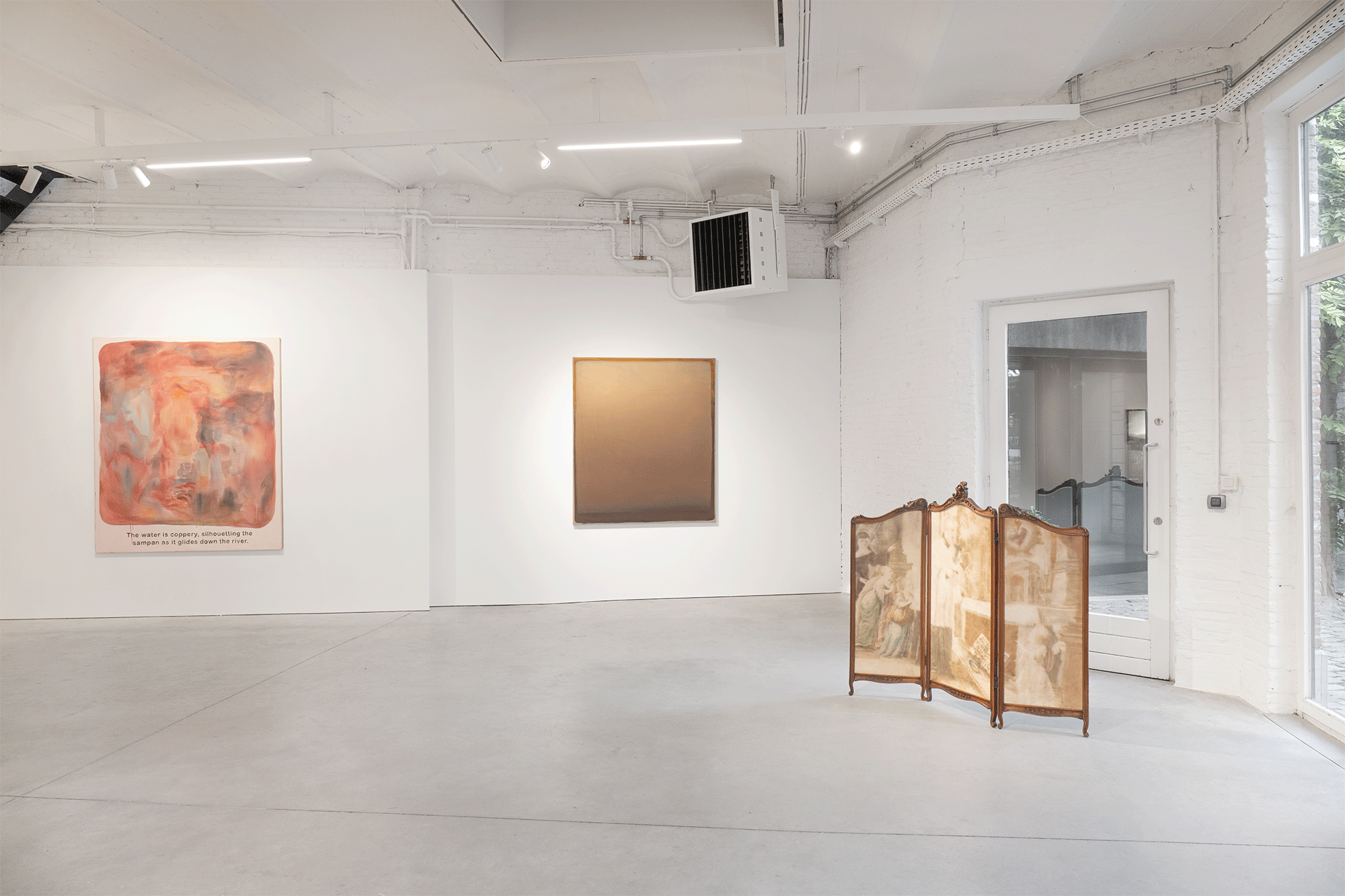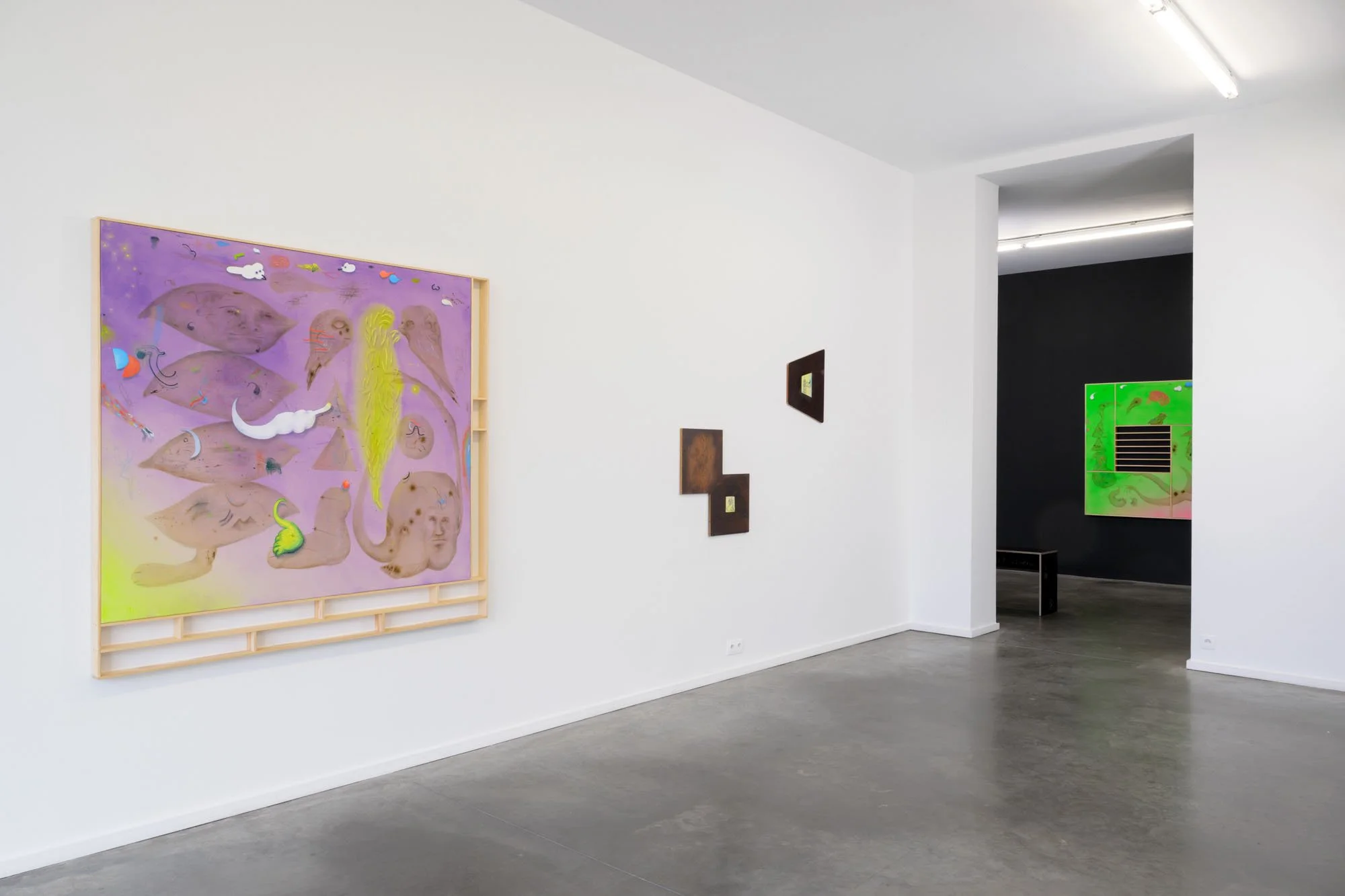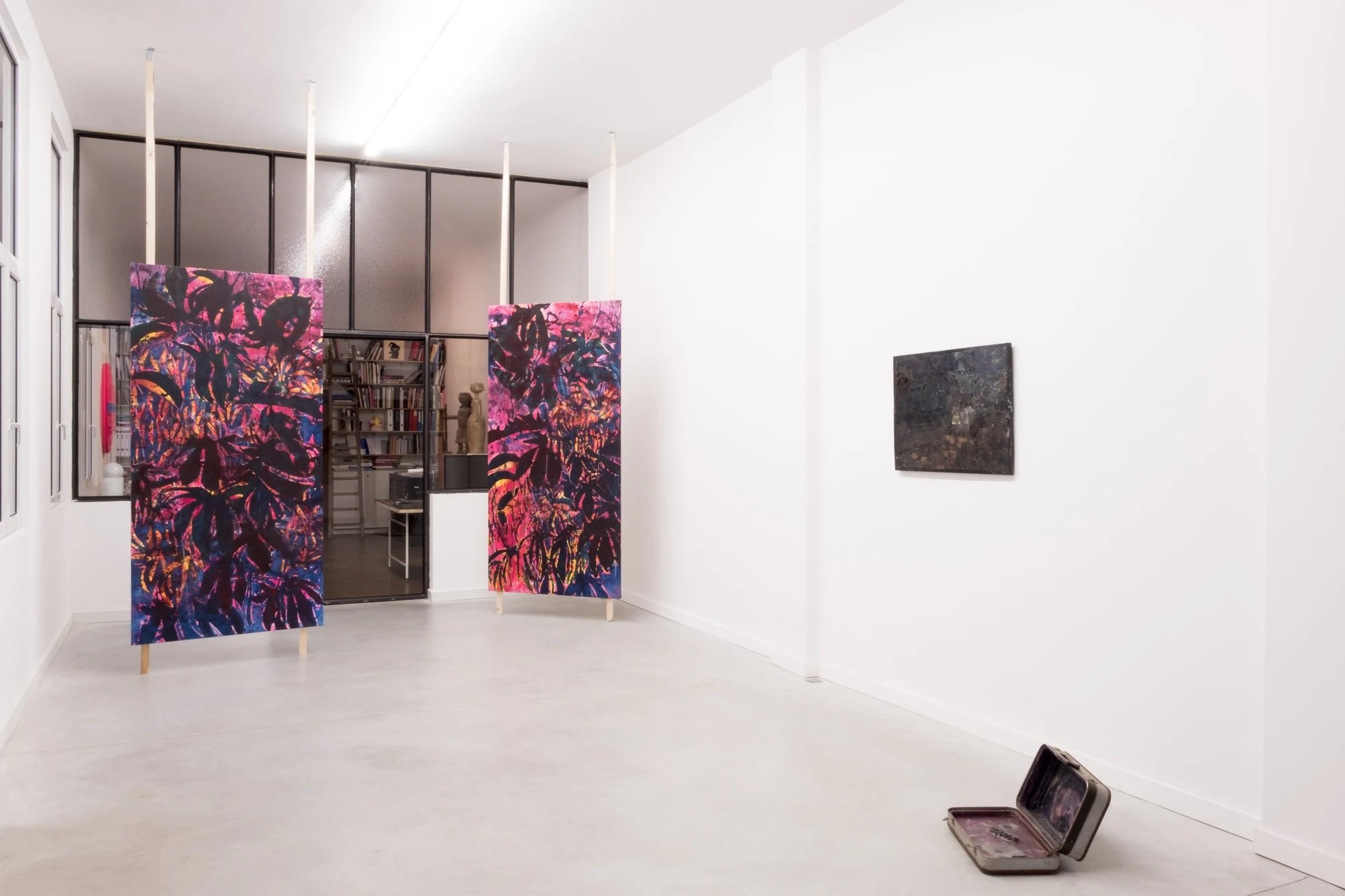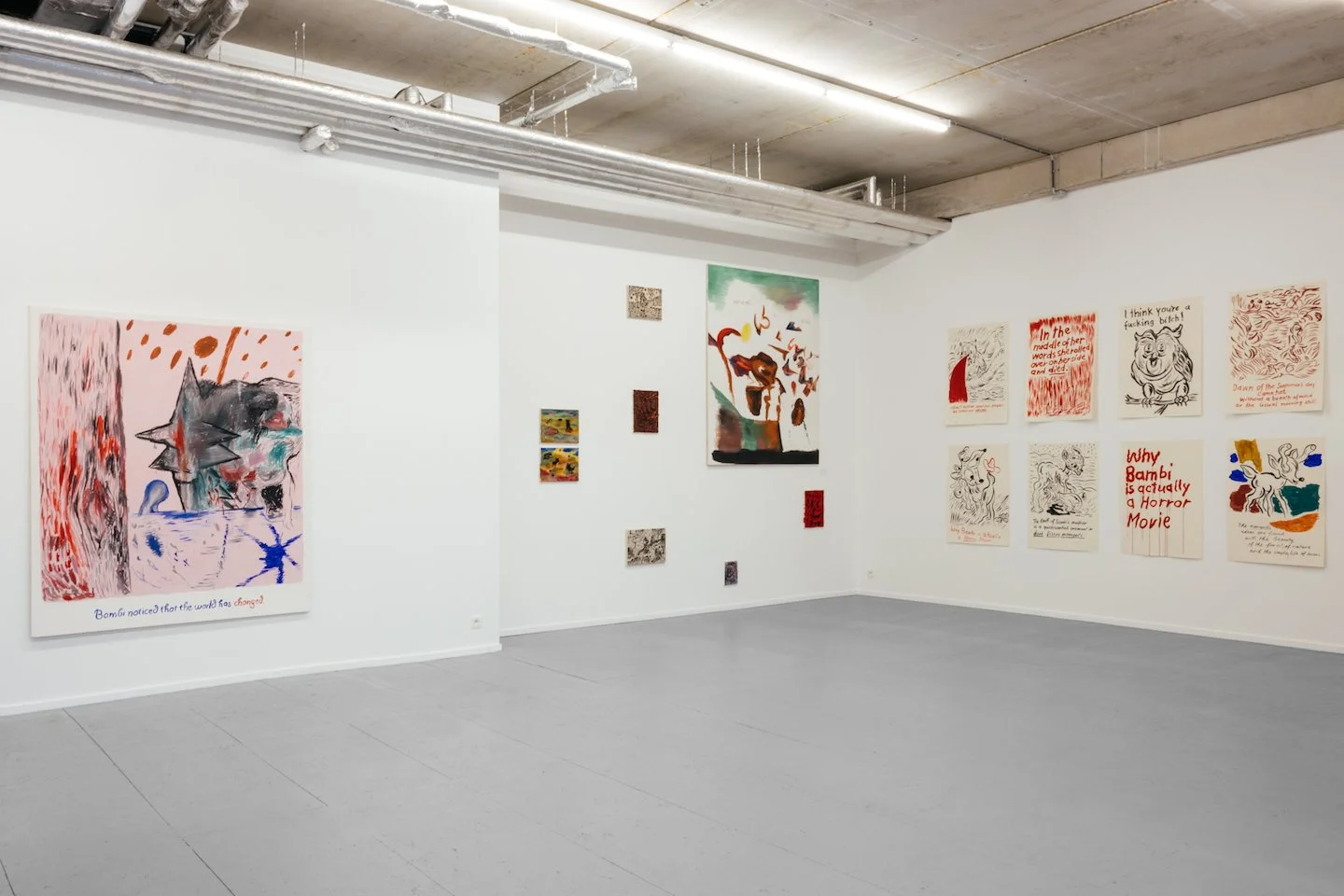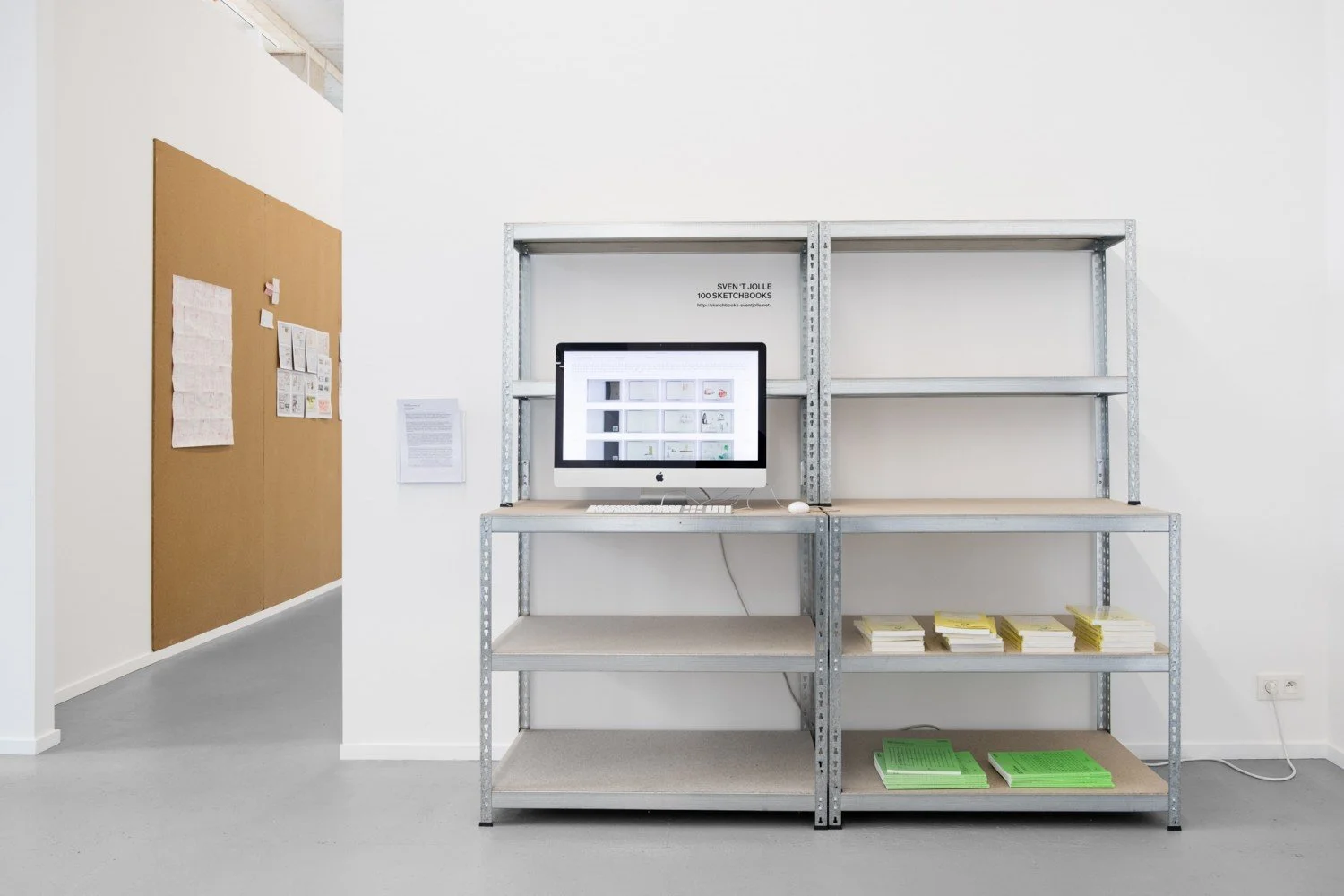Exhibitions
2025
Featured
Summer group presentation
Beni Bischof, Daan Couzijn, Nelleke Cloosterman, Bram Kinsbergen, Roy Mordechay, Florian Tomballe and Victor Verhelst.
13.08.2025 — 23.08.2025
2024
Featured
Group exhibition
Bent Van Looy, Bram Kinsbergen, Frederik Heyman, József Csató, Roy Mordechay, Tatjana Gerhard
22.06.2024 — 01.09.2024
Group exhibition
Filip Vervaet, Jean-Pierre Temmerman, Lars Morell, Renée Pevernagie
22.06.2024 — 01.09.2024
Group exhibition
Tatjana Gerhard, Aurélie Gravas, Julien Meert, Nadia Naveau, Xavier-Noiret Thomé, Sébastien Reuzé, Carole Vanderlinden, Franck Scurti, Sven 't Jolle, Sophie Ullrich
24.02.2024 — 24.03.2024
2023
Featured
Group exhibition
Jonas Lund, Daan Couzijn, Harm van den Dorpel, Libby Heaney, Sarah Meyohas, Victor Verhelst, Arvida Byström, Gretta Louw, Frederik De Wilde
02.09.2023 — 08.10.2023
Group exhibition
Jenny Brosinski, Corydon Cowansage, Max Frintrop, Tatjana Gerhard, Nicholas William Johnson, Judit Kristensen, Jean-Pierre Temmerman, Julia Trybala, Sharon Van Overmeiren
25.03.2023 — 26.04.2023
2022
Featured
Group exhibition
Werner Mannaers József Csató, Manor Grunewald, Nicholas William Johnson, Sven ‘t Jolle, Sergio De Beukelaer, Laurens Legiers, Xavier Noiret Thomé, Mevlana Lipp, Lysandre Begijn, Rik De Boe, Nelleke Cloosterman, Sean Crossley, Kendell Geers, Daan Gielis, Milan Kunc, Sam Druant, Juliane Noll, Victor Verhelst, Beni Bischof, Bernd Lohaus, Carole Vanderlinden, Celina Vleugels, Ralf Kokke, Amber Andrews, Lily Van der Stokker, Heidi Ukonnen, Tony Matelli, Michael Johansson 25.05.2022 — 21.08.2022
Group exhibition
Nicholas William Johnson, Victor Verhelst, Anne-Mie Van Kerckhoven, Frederik Heyman, Vaast Colson, Yannick Val Gesto and Beni Bisschof
26.05.2022 — 26.06.2022
‘Group exhibition’
Mevlana Lipp, Ritsart Gobyn, Filip Vervaet, Roy Mordechay and Nelleke Cloosterman
02.04.2022 — 08.04.2022
2021
Featured
Duo exhibition
Carole Vanderlinden & Carlos Caballero
04.09.2021 — 10.10.2021
Group exhibition
Vaast Colson, Sergio De Beukelaer, Tatjana Gerhard, Ritsart Gobyn, Laurens Legiers, Mevlana Lipp, Damien Meade and Filip Vervaet
10.04.2021 — 09.05.2021
2020
Featured
Group exhibition
Joakim Ojanen, Jean Jullien, Charline Tyberghein, Charlie Roberts, James Ulmer, Ryan Travis Christian, Mark Posey, Martín Kazanietz, Royal Jarmon, Maja Djordjevic, Hiroya Kurata, Marcus Brutus
05.09.2020 — 11.10.2020
Group exhibtion
Bendt Eyckermans, Beni Bischof, Guy Mees, Max Pinckers, Nel Aerts, Nicholas William Johnson, Sergio De Beukelaer, Sven 't Jolle, William Ludwig Lutgens, Jenny Brosinski, Flexboj & L.A., Bram Bogart, Carole Vanderlinden, Vaast Colson, Filip Vervaet, Felix De Clercq, Fleur De Roeck
01.08.2020 — 23.08.2020
2019
Featured
2018
Featured
‘BE:YO:ND’
Guillaume Bijl, Nicholas William Johnson, Stephanie Hier, Vivien Zhang
20.10.2018 — 18.11.2018
Group exhibition
Anton Cotteleer, Bernd Lohaus, Guy Mees, Jenny Brosinski, Nel Aerts, Nicholas William Johnson, Stéphanie Baechler
28.09.2018 — 27.10.2018
Group exhibition
Antwan Horfee, Tom Volkaert, Stevie Dix, Jenny Brosinski
01.09.2018 — 14.10.2018
Group exhibition
Andy Warhol, Amélie Bouvier, Beni Bischof, Cleon Peterson, Georgina Gratrix, Karin Hanssen, Kasper De Vos, Koen Van den Broek, Max Pinckers, Mike Bouchet, Nicholas William Johnson, Sergio De Beukelaer, Sven ’t Jolle
30.06.2018 — 19.08.2018
2017
Featured
2016
Featured
Group exhibition
Nicolas Pelzer, Almudena Lobera, Guillaume Bijl, Erika Hock, Oscar Hugal, Joris Van de Moortel, Tom Volkaert, G. Leddington, Wesley Meuris, Geert Goiris, Koen Sels, Helene Claes, & Zach Bischop, Dirk Zoete, Gijs Van Vaerenbergh, Edi Danartono
22.12.2016 — 21.01.2017
2015
Featured





